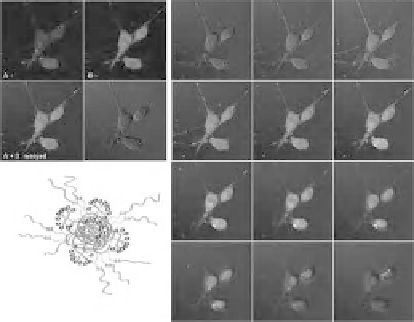Biomedical Engineering Reference
In-Depth Information
worth mentioning that Odriozola and co-workers obtained a reduction
in the dimension by introducing gadolinium into the nanoparticle due
to the chelating eff ect with the cross-linker (see Section 2.2.1.3).
2.4
Applications and Future Perspectives
Despite the advances shown in the previous sections, the application
of SCPNs in nanomedicine is still in its infancy. However, it is clear to
see that in forthcoming years, SCPNs will have a tremendous impact
in that field and many new applications will emerge.
Hamilton and Harth have recently published a very nice example of
SCPNs applied in nanomedicine. In this brilliant work, they describe
the use of SCPNs conjugated with dendritic units for the intracellular
delivery of peptide-based therapeutics [31]. The dendritic molecular
transporters appeared to be critical for the delivery of the nanoparticle
into 3T3 cells. The peptidic cargo was attached by means of disulfide
linkages, which were cleaved intracellularly to release the therapeutic
peptide. The intracellular uptake of the nanoparticles was monitored
using fluorescent dyes (Figure 2.4).
Figure 2.4
Cellular uptake experiments of nanoparticle transporter
conjugate into NIH 3T3 cells investigated
via
confocal microscopy imaged
for the fluorescence of the Alexa Fluor 568 dye (B) and the fluorescein (A),
with complementing
z
-stack showing the presence of both fluorophores
from the bottom (top, left) to the top of the cells (bottom, right). The cells
were incubated for 30 min with a 37.2
μ
M solution of 15 in Hanks buff ered
saline solution (HBSS). Reproduced from ref. [31] with permission. See also
Color Insert.

















Search WWH ::

Custom Search